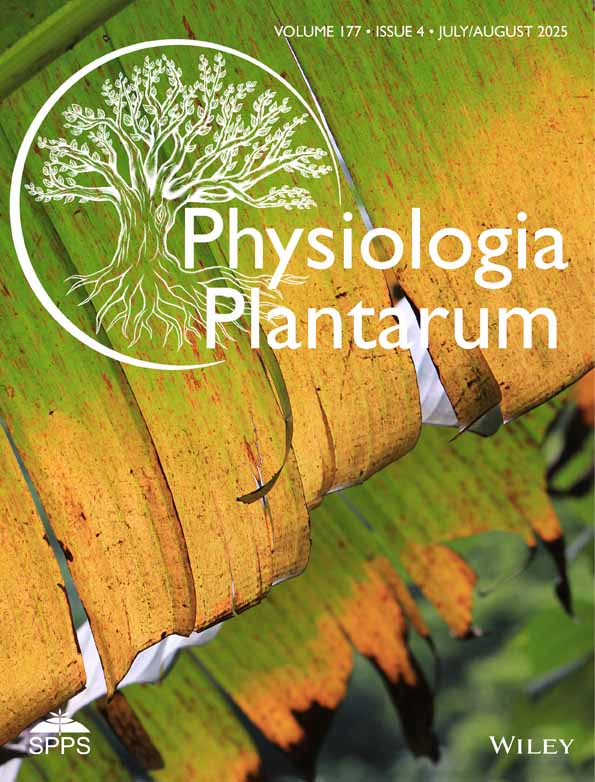Purification and characterization of a calcium-regulated protein kinase from beet root (Beta vulgaris) plasma membranes
Abstract
A calcium-regulated protein kinase (CRPK) associated with the plasma membrane of beet root cells was purified by deoxycholate extraction of plasma membrane proteins followed by chromatography in DEAE- and phenyl-Sepharose columns. This procedure rendered a purified CRPK preparation with a specific activity higher than 2.2 μmol mg-1min-1 using histone III-S as substrate. The molecular mass of CRPK, estimated by SDS-PAGE, was 58 kDa. Gel filtration and glycerol gradient centrifugation indicated that the native enzyme is a monomer. Phosphorylation of histone by CRPK displayed a broad pH optimum between 7.0 and 8.2, Syntide-2, a CaM-kinase II substrate, was phosphorylated much more efficiently than kemptide, Ac-MBP (4–14), CKII substrate or poly-(Glu, Tyr) 4:1. The kinetics of this enzyme can be described by a steady-state ordered mechanism in which four bound Ca2+ ions are required for the phosphorylation of the peptide substrate. After Ca2+ binding, the affinity of the enzyme for ATP was not affected while that for syntide-2 or histone decreased. Curves of kinase activity vs ATP at different syntide-2 concentrations indicated that the Km values for ATP or syntide-2 increased with increasing cosubstrate concentrations. Similar curves of kinase activity vs ATP at different histone concentrations indicated that the apparent affinities of CRPK for ATP or histone were not affected by the cosubstrate concentration. The purified CRPK was not recognized by antibodies against soybean or Arabidopsis calcium-dependent protein kinase (CDPK). These results suggest that CRPK and CDPKs could be different enzymes, although they show some similar properties.
Abbreviations
-
- BTP
-
- 1.3 bis[tris-(hydroxymethyl)methylamino]propane
-
- CaM
-
- calmodulin
-
- CaM-Kinase II
-
- Ca2+ and calmodulin-dependent kinase II
-
- CDPK
-
- calcium-dependent protein kinase
-
- CHAPS
-
- 3-[(3-cholamidopropyl)dimethylammonio]-propanesulfonate
-
- CK II
-
- casein kinase II
-
- CRPK
-
- calcium-regulated protein kinase
-
- DOC
-
- deoxycholate
-
- FPLC
-
- fast protein liquid chromatography
-
- PMSF
-
- phenylmethylsulfonyl fluoride




